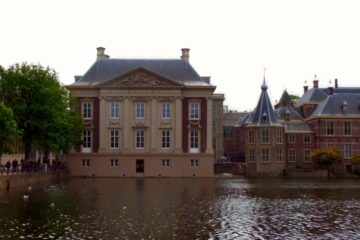
Testing Power schreef ik (in het Engels) voor de negentigste verjaardag van Kema Laboratories, dat tegenwoordig deel uitmaakt van DNV GL. Dat betekende oude documenten doornemen en oudgedienden spreken. Geen dik historisch verantwoorde pil, maar een toegankelijk verhaal over een bedrijf met een bewogen geschiedenis en een enorme impact op de manier waarop Nederland is ingericht.
Testing Power
For ninety years the KEMA Laboratories, based in Arnhem, The Netherlands, have been on the forefront of testing high voltage and high power equipment. They were among the first in their league to acquire an international reputation, thanks to rigorous testing methods, continuous innovation and the highest standard in facilities.
Research and testing at KEMA have evolved from an improvised installation in the annex of an old hotel to a sequence of purposely built laboratories, of which the High Power Lab is the latest. This book describes how a vision laid down in 1927 worked its way to the present, leading to the largest and most robust testing organization for the power industry today.
Roots
The history of KEMA is inextricably linked to the early days of electricity generation in The Netherlands, when regional and local power companies joined efforts to assure the supply of good quality components for their fledgling networks. To this end they set up a laboratory in Arnhem, which had one important difference from similar laboratories elsewhere. It took up assignments not only from its shareholders but also from other stakeholders in the new industry.
From this open shop attitude grew a testing facility that was respected throughout Europe and, after it had been rebuilt from scratch during the aftermath of the Second World War, the rest of the world. Following the example of the laboratories KEMA also offered its knowledge on the proper design of high power networks to the market.
Of course, theoretical and practical knowledge interact. Knowledge about the design of networks tells what behaviour components must be tested for. Testing results, on the other hand, give insights as to which designs are the most feasible. Hence, having both types of knowledge in house gives KEMA a large advantage when it comes to assuring customers that all factors involved in building high power networks have been taken into account in its reports.
Development
Like many company laboratories KEMA maintained an academic attitude until well into the 1970’s. Commercial interests were taken into account, naturally, but many operations were primarily driven by scientific curiosity. The shareholders, Dutch government owned electricity companies, saw KEMA as a public institution rather than as a business.
This started to change in the 1970’s, as power generation became a much more international market than before. KEMA moved from a more or less academic to a professional institution, with larger emphasis on business and organizational efficiency. Cost control became an important issue.
Twenty years on, KEMA reached the industrial stage. The high investments in laboratories meant they had to be utilized at maximum capacity as much as possible. This necessity is only highlighted by the opening of the new High Power Lab, the largest investment ever at the KEMA Laboratories, which are nowadays part of DNV-GL, a prominent global brand in testing and certification.
As the energy sector faces crucial transitions in the twenty-first century, electric power systems are taking central stage, even more than before. They have become ever more complex, handling powers hitherto unheard of. The KEMA Laboratories are determined to keep up to pace with technological developments, playing their unique role in guaranteeing safe and reliable electricity supply worldwide.





